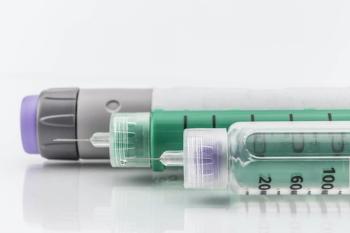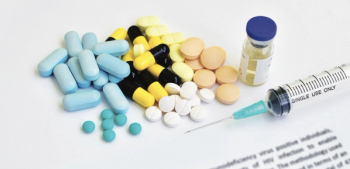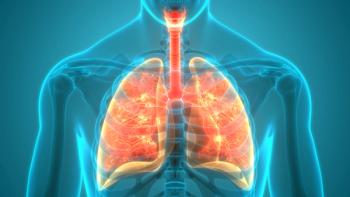
Guidelines typically recommend debulking surgery, plus systemic chemotherapy for most patients.

Guidelines typically recommend debulking surgery, plus systemic chemotherapy for most patients.

Health System Owned Specialty Pharmacy Alliance issues open letter outlining three needed industry actions to improve patient care and outcomes.

OTC Cases around the Common Cold for March 2021.

The oncology space has seen rapid growth in the last decade, with new approvals and indications necessitating expertise in areas such as medication use, safe practices, and reimbursement practices.

Hager Hanon, PharmD, RPh, senior pharmacist at Community Care Rx, discusses COVID-19 vaccination hesitancy among pregnant women and people with a history of anaphylaxis.

Some drugs commonly used for psoriasis can increase the risk of cardiovascular diseases, whereas other treatments can reduce the risk.

Further, the findings indicate that rapid screens can predict infection with nearly the same precision as antibody tests conducted in a lab, which could be useful for providers.

The device remains the same, but will have a larger cartridge that contains 4, 1 mg doses.

Patients with lupus who have lower vitamin D levels are more likely to have metabolic syndrome and insulin resistance, both of which are linked to heart disease, according to a new study published in Rheumatology.

Understanding breast cancer and which patients may be more vulnerable to long-term treatment effects and which patients may benefit most, can help oncologists design the best personalized neoadjuvant and adjuvant human epidermal growth factor receptor 2 (HER2)-targeted therapy.

Data have demonstrated that some patients with type 1 diabetes have resorted to unregulated DIY systems for disease management due to frustrations with slow progress made by health care providers in the management of their disease.

Researchers found that viral variants expressed their genes at different rates and quantities, which likely contributes to the different timing and severity of symptoms within hosts.

After the implementation of measures to stop COVID-19, newly detected respiratory viruses were approximately 80% lower compared to the same time period from 2015 to 2019.

A panel of experts in neuroendocrine tumors review the challenges in the management of patients based on the site of the tumor.

Modifications include high rates of neoadjuvant endocrine chemotherapy, genomic assay testing on core biopsies, and delays in planned surgeries.

After reviewing the mechanisms of the first three COVID-19 vaccines granted emergency use authorization, we can now address some of the most common concerns that have been expressed regarding vaccine hesitancy.

With their content ranging from pharmacy references in pop culture to more clinical discussions of specific drugs, the Let's Pharmonize podcast hosts have learned to balance the rigors of school with their biweekly podcast.

The study, conducted by investigators from the Breast Cancer Surveillance Coalition (BCSC), had an objective to quantify the impact of the COVID-19 pandemic on both breast cancer screening and diagnostic mammography services in the United States.

Ted Karkus, CEO of ProPhase Labs, discusses the differences between saliva COVID-19 tests and nasal swab COVID-19 tests and their different uses in clinical practice.

The research team analyzed CD4-cell gene expression data from a study of HIV-infected people in Africa and Asia.

Bariatric surgery can significantly reduce the risk of cancer—and especially obesity-related cancers—by as much as half in individuals with severe obesity and nonalcoholic fatty liver disease (NAFLD), according to a study by researchers at Rutgers Robert Wood Johnson Medical School's Center for Liver Diseases and Liver Masses.

In addition to the usual considerations of treating pediatric patients, clinicians should consider how pharmacokinetics may differ for children with obesity, according to a session at the 2021 virtual National Association of Pediatric Nurse Practitioners meeting.

The overuse of antibiotics in hospitals can lead to the emergence of drug-resistant strains of bacteria or outbreaks of infections by bacteria, such as Clostridiodes difficile (C. difficile).

This week on Pharmacy Times, there are a number of important topics that will be covered and posted throughout the week

Risk factors for norovirus include eating foods in non-sanitary places and attending childcare centers or preschools.

In a Pharmacy Times® Peer Exchange video series, experts discussed the current landscape and management of relapsed or refractory multiple myeloma (RRMM), including the latest data and potential treatment strategies on the horizon.

In this high-risk population, strategies for minimizing viral exposure during a pandemic are being considered with oncology treatment options.

Cardiometabolic health risk factors include metabolic syndrome, a cluster of disorders that include excess fat around the waist, insulin resistance, and high blood pressure.

While the prevalence of COVID-19 in patients with COPD is relatively low, those who are infected with the virus experience more severe symptoms than those without COPD.

Opioid overdoses are killing nearly as many of our neighbors and patients as COVID-19 and in much younger populations.